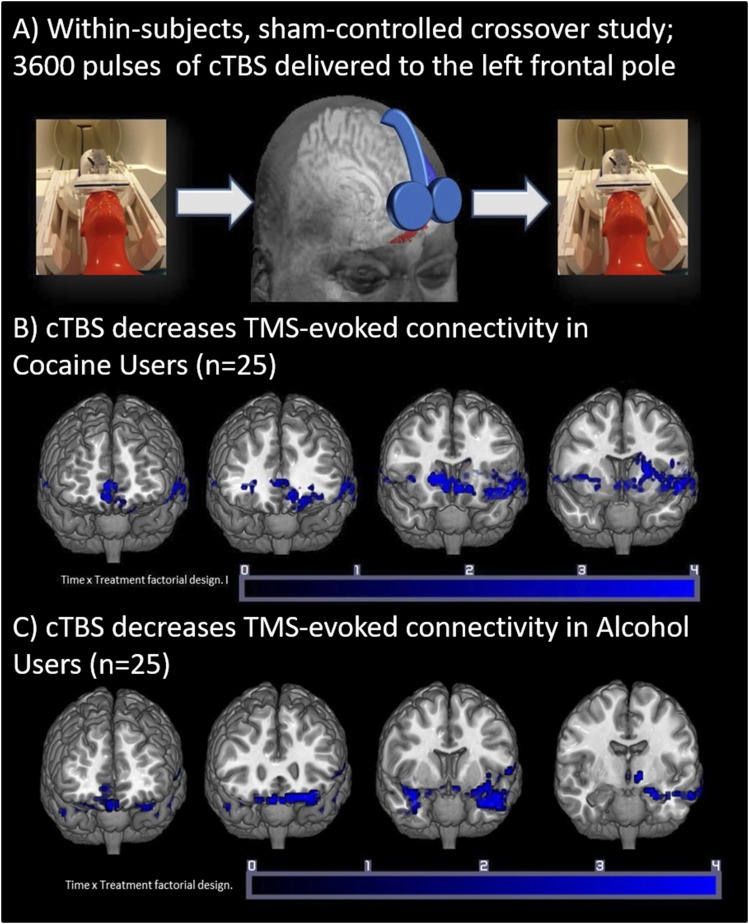Fig. 4.
The effect of frontal pole cTBS on brain reactivity in cocaine users and alcohol users (adapted from Hanlon et al., 2015, 2017). Interleaved TMS/BOLD imaging was used to measure TMS-evoked BOLD signal immediately before and after cocaine users (B) and heavy alcohol users (C) were given a dose of cTBS to the left frontal pole (A). The TMS coil was placed over FP1 (EEG:10-20 system) for both the interleaved TMS/BOLD scan (left and right panel) and the cTBS session (center panel). The red area represents the region of interest to which the coil is targeted (AAL: left superior and middle orbital prefrontal cortex inferior to the anterior commissure). Real cTBS (LTD-like) led to a significant decrease in BOLD signal in the left orbital/medial prefrontal cortex and ventral striatum (SPM 8, P < 0.05 family wise error correction, negative Z-scores shown). The cTBS protocol was two trains of 1800 pulses, 110% rMT, 60-second intertrain interval, intensity ramped from 80% to 110% over first 30-second L = left hemisphere. These data reveal that 3600 pulses of real cTBS to the left frontal pole decrease stimulus-evoked activity in the MPFC, cingulate, and striatum of cocaine users and MPFC and insula of alcohol users significantly more than sham cTBS.

